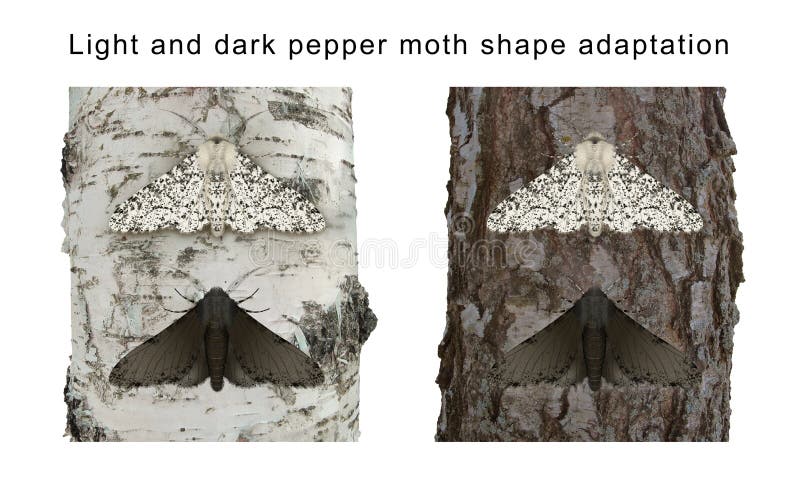The Wonder Of Animals: A Journey Through Evolution And Adaptation

Table of Contents
The Mechanisms of Animal Adaptation
Animal adaptation is driven by two primary mechanisms: natural selection and genetic mutations. Understanding these processes is key to appreciating the incredible variety of life on our planet.
Natural Selection: The Driving Force of Adaptation
Natural selection, the cornerstone of Darwin's theory of evolution, explains how species adapt to their environments over time. It operates through four key principles:
- Variation within populations: Individuals within a species exhibit variations in their traits. These variations can be physical, behavioral, or physiological.
- Inheritance of traits: Many of these traits are heritable, passed down from parents to offspring through genes.
- Differential survival and reproduction: Individuals with traits better suited to their environment are more likely to survive and reproduce, passing on those advantageous traits.
- Adaptation over time: Over generations, the frequency of advantageous traits increases within the population, leading to adaptation to the specific environmental pressures.
A classic example is Darwin's finches on the Galapagos Islands. Different finch species evolved beaks uniquely suited to the available food sources on their respective islands – a perfect illustration of animal adaptation through natural selection.
Genetic Mutations: The Raw Material for Adaptation
Genetic mutations are random changes in an organism's DNA. While many mutations are neutral or harmful, some can be beneficial, providing the raw material for natural selection to act upon.
- Random nature of mutations: Mutations occur spontaneously and are not directed by environmental needs.
- Beneficial, harmful, and neutral mutations: A beneficial mutation might confer increased resistance to disease or improved camouflage. Harmful mutations can be detrimental or even lethal. Many mutations are neutral, having no noticeable effect.
- Mutation as a source of variation: Mutations increase genetic diversity within a population, providing the variation upon which natural selection operates.
- Role of gene flow and genetic drift: Gene flow (movement of genes between populations) and genetic drift (random changes in gene frequencies) also contribute to genetic variation, influencing the process of animal adaptation.
Examples of Animal Adaptation Across Diverse Environments
The diversity of life on Earth is a testament to the remarkable capacity of animals to adapt to diverse environments. Here are some striking examples:
Camouflage and Mimicry: Masters of Deception
Many animals have evolved sophisticated camouflage and mimicry strategies to survive.
- Stick insects mimicking twigs: Their body shape and coloration make them virtually indistinguishable from their environment, providing excellent protection from predators.
- Chameleons changing color: These reptiles can alter their skin color to match their surroundings, a remarkable example of behavioral animal adaptation.
- Viceroy butterflies mimicking Monarch butterflies: The Viceroy's resemblance to the toxic Monarch butterfly deters predators. This is a prime example of mimicry.
- Polar bears' white fur in snowy environments: Their fur provides exceptional camouflage in their arctic habitat, aiding in hunting and predator avoidance.
Physiological Adaptations: Internal Adjustments for Survival
Physiological adaptations involve internal changes that enhance survival and reproduction.
- Camels' ability to store water: Their humps store fat, which is metabolized to provide water, allowing them to survive in arid environments.
- Arctic foxes' thick fur for insulation: Their dense fur provides excellent insulation against extreme cold, crucial for survival in arctic regions.
- Specialized digestive systems in herbivores: Animals like cows and sheep have specialized digestive systems to efficiently break down plant matter.
- Adaptations to extreme temperatures: Desert animals have adaptations to conserve water and tolerate heat, while arctic animals have adaptations to survive extreme cold. These are powerful examples of animal adaptation to climate.
Behavioral Adaptations: Actions for Survival and Reproduction
Behavioral adaptations are actions or patterns of behavior that enhance survival and reproductive success.
- Monarch butterfly migration: Their remarkable annual migration across vast distances is a spectacular display of behavioral adaptation.
- Bears hibernating during winter: Hibernation is an energy-saving strategy allowing them to survive periods of food scarcity.
- Pack hunting in wolves: Cooperative hunting strategies enhance their success in capturing prey.
- Bird mating rituals and nest building: Complex mating behaviors and nest building strategies increase their reproductive success.
The Impact of Environmental Changes on Animal Adaptation
Environmental changes, both natural and human-induced, significantly impact animal populations and their ability to adapt.
Climate Change and Adaptation: A Growing Threat
Climate change presents a significant challenge to many species.
- Shifting habitats: Changes in temperature and precipitation patterns are forcing species to migrate or adapt to new conditions.
- Changes in food availability: Altered climate patterns can disrupt food webs, impacting food availability for many animals.
- Increased competition: As habitats shrink and resources become scarcer, competition between species intensifies.
- Extinction risks: Species unable to adapt quickly enough to rapid environmental change face an increased risk of extinction.
Human Impact and Conservation: Our Role in Animal Adaptation
Human activities are profoundly impacting animal populations and their ability to adapt.
- Habitat destruction: Deforestation, urbanization, and agriculture are destroying habitats at an alarming rate.
- Pollution: Air, water, and soil pollution pose serious threats to animal health and survival.
- Introduction of invasive species: Invasive species can outcompete native species for resources, leading to population declines.
- Conservation strategies: Protected areas, captive breeding programs, and habitat restoration are vital conservation strategies to support animal adaptation and biodiversity.
Conclusion
The wonder of animal adaptation lies in its power to showcase the resilience and ingenuity of life. From the subtle shifts in genetics to the dramatic behavioral changes, animals have demonstrated a remarkable ability to thrive in diverse and ever-changing environments. However, human impacts are increasingly threatening this intricate balance. Understanding the mechanisms of animal adaptation is crucial for effective conservation strategies to protect biodiversity and the future of countless species. Continue exploring the fascinating world of animal adaptation—learn more and contribute to conservation efforts today!

Featured Posts
-
 Serie A Pliris Odigos Gia Athlitikes Metadoseis
May 13, 2025
Serie A Pliris Odigos Gia Athlitikes Metadoseis
May 13, 2025 -
 How Close Did The How To Train Your Dragon Live Action Remake Come To A Controversial Decision
May 13, 2025
How Close Did The How To Train Your Dragon Live Action Remake Come To A Controversial Decision
May 13, 2025 -
 Los Angeles Dodgers Set To Bid On Top Mlb Free Agent Report Claims
May 13, 2025
Los Angeles Dodgers Set To Bid On Top Mlb Free Agent Report Claims
May 13, 2025 -
 Nba Draft Lottery Odds 2025 Cooper Flagg Sweepstakes Predictions
May 13, 2025
Nba Draft Lottery Odds 2025 Cooper Flagg Sweepstakes Predictions
May 13, 2025 -
 Nove Udaje Pre Atlas Romskych Komunit Zber Dat Od Aprila
May 13, 2025
Nove Udaje Pre Atlas Romskych Komunit Zber Dat Od Aprila
May 13, 2025
Latest Posts
-
 Tory Lanezs Heated Exchange With Lawyer In Megan Thee Stallion Case
May 13, 2025
Tory Lanezs Heated Exchange With Lawyer In Megan Thee Stallion Case
May 13, 2025 -
 Controversy Erupts Kim Kardashians Swim Campaign And The Tory Lanez Song
May 13, 2025
Controversy Erupts Kim Kardashians Swim Campaign And The Tory Lanez Song
May 13, 2025 -
 Tory Lanez Attacks Lawyer During Megan Thee Stallion Trial
May 13, 2025
Tory Lanez Attacks Lawyer During Megan Thee Stallion Trial
May 13, 2025 -
 Global Natural Fiber Composites Industry Market Trends And Forecast To 2029
May 13, 2025
Global Natural Fiber Composites Industry Market Trends And Forecast To 2029
May 13, 2025 -
 Tory Lanez Prison Stabbing Report Details Emergency Hospitalization
May 13, 2025
Tory Lanez Prison Stabbing Report Details Emergency Hospitalization
May 13, 2025
